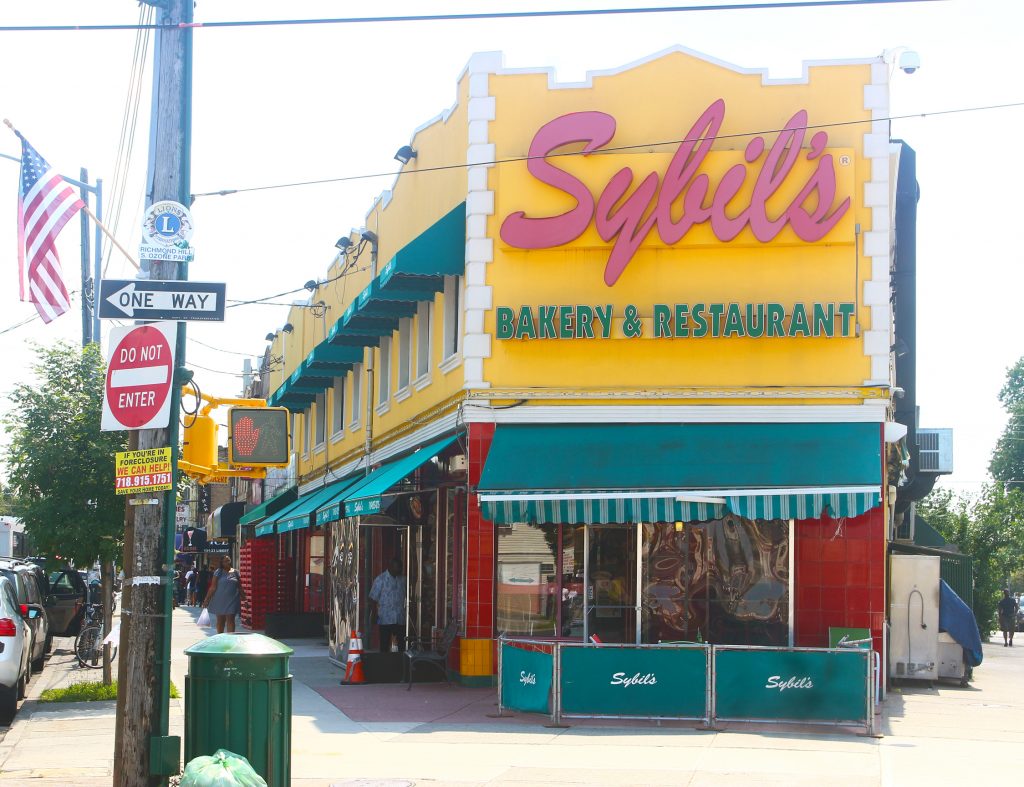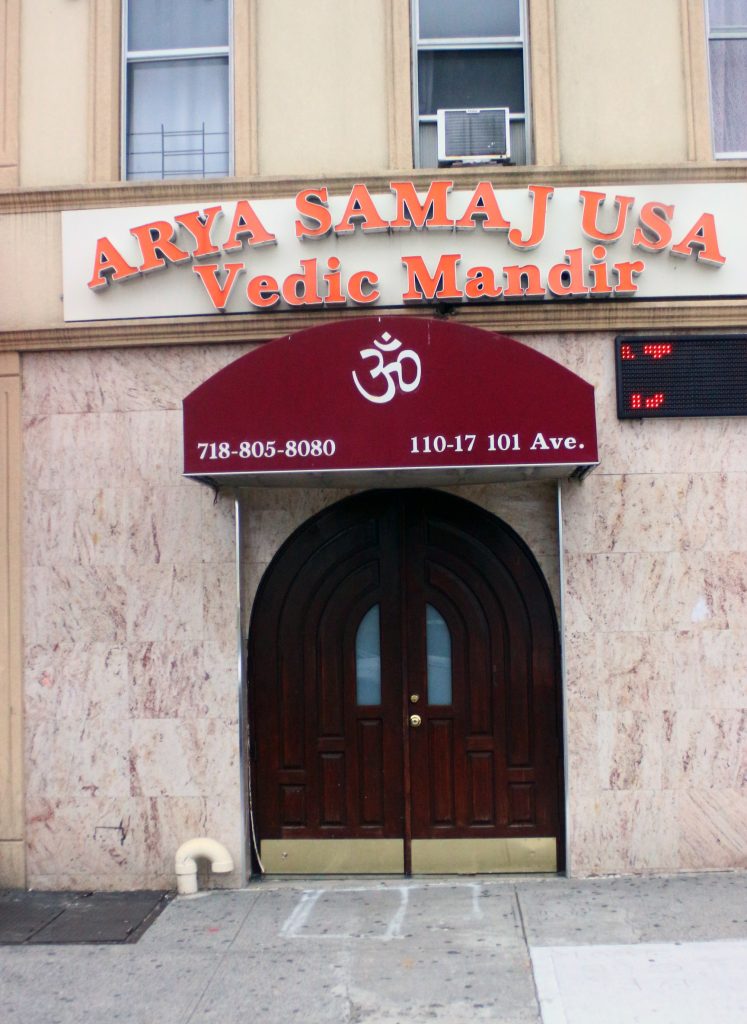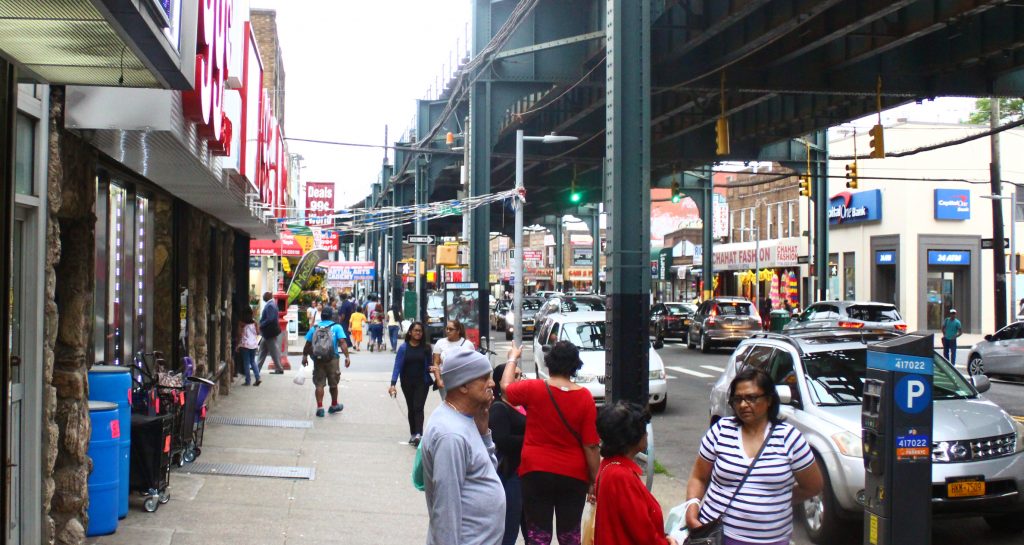
‘Little Guyana’ making a big impact
By Ravin Singh
Amidst waves of noise emerging from commercial activities along Liberty Avenue in Richmond Hill, New York, there exists a unique culture imported from a tiny English-speaking country 2600 miles away.
Following independence in 1966, thousands of Guyanese migrated to New York in search of more stable economic and political conditions. Initially, many settled in the West Side of Manhattan but later moved to South Queens due to cheaper housing.
That trend continued and today Guyanese make up the second largest immigrant population in Queens, and the fifth largest in New York – 140,000 – as was revealed by the U.S. State Department last year.
With a large fraction of that amount residing in Richmond Hill, which is also home to many Guyanese businesses, the area has claimed the coveted title of ‘Little Guyana’ – a strip which runs from 104th to 130th Street. A neighbouring area known as Ozone Park also makes up Little Guyana.
Along Liberty Avenue, the vibrancy with which Guyanese culture emerges makes it almost unchallengeable in these parts. With Chutney blaring from cars and Indian-themed stores to the distinct aroma of Guyanese cuisine, it is almost as if you’re in the heart of Georgetown.
So much so, that for non-Guyanese who reside here, Guyana is not known for what it is generally appreciated for by foreigners – ecotourism. In these parts, it is strands of a cultural fabric that are creating an unimaginable experience for them.
Here, Guyanese culture is being assimilated to the extent where it has become a lifestyle for many New Yorkers who are not of Guyanese heritage. Almost daily, these aspects of culture dictate how they live – what they eat, what they buy, where they worship, where they go, how they speak, and so on.
CUISINE
Perhaps the most profound impact Guyanese culture has had in Richmond Hill, is in its cuisine. And no other restaurant offers Guyanese food quite like Sybil’s Restaurant – a cultural touchstone which was established here in the early 1990s.

Tantalizing Guyanese dishes – including cook-up, pepper-pot, chowmein, etc. – line the metal countertop of this to-go restaurant which accommodates roughly 40 people at a time. The atmosphere is strikingly similar to that of food shops at Stabroek, except for the cost, which is much higher here.
But this cost factor does little to dissuade even those who find the food relatively expensive. And for non-Guyanese who live here, it provides a rich experience of being able to appreciate Caribbean cuisine with an Asian touch.

“My favourite thing to eat here is curry because I love the blend of spices. Because of the curry, I’m also a lover of roti,” said one of the restaurant’s most frequent customer, John who is of German heritage.
He noted that Guyanese food is quite different from what he is accustomed to and it is not just about the taste.
“I like the spice, the flavour, the texture, the aroma and how it looks; everything about it. But I also like how it is prepared. I like the atmosphere in here, and I love the personality of the cooks. That is an experience you can’t put a price to,” he shared.
GOODS & SERVICES
For some though, the experience of purchasing ‘ready-made’ Guyanese food is not entirely fulfilling. Those like Kenise Clarke, a Jamaican-born immigrant, prefer preparing these dishes the way her Guyanese husband taught her.
“There’s something about preparing it that makes it more fulfilling. The food might taste the same, but it brings some amount of satisfaction knowing that you were able to prepare the dish of another country,” she shared.
Interestingly, this practice of shopping Guyanese-branded groceries has extended to include household products, such as the rolling pin or as Guyanese would say, “belna”.
“Before meeting my husband, I had no use for a rolling pin. It was non-existent to me… but now I cannot do without it, and it’s the same for a lot of other household items that are unique to Guyana. He has introduced me to products which have become a necessity in our home,” Clarke added.
With Guyanese-owned businesses scattered throughout Richmond Hill, it came as no surprise when she stated that: “because [Guyanese] products dominate the market here, it brings down the cost which makes them more affordable and attractive for low-income earners like us.”
Testimony of this is the fact that Guyanese-operated barber shops in Richmond Hill are relatively inexpensive compared to other barbershops across New York. Data released by mobile payment company Square, revealed that the average haircut for men costs US$28 nationwide.

But at ‘Top Line Barbers,’ and other Guyanese-owned barbershops in the area, the price is as low as US$7, and has a ceiling of US$13. For this reason, these shops are often flooded with both Guyanese, and to a large extent, non-Guyanese customers who make appointments to get a haircut.
RELIGION
Subscription to Guyanese culture by New Yorkers is even realized in how religion is practised here.
With an Indo-dominated demographic, it’s only logical to assume that Mandirs and Masjids are the most popular places of worship in Richmond Hill. But enquiry and observation would prove otherwise.
Churches, although they do not appear as frequently, are equally subscribed to in this religiously diverse geographic space. Many, it was discovered, are run by the Guyanese community, despite their membership comprising immigrants from 15-20 different countries. Faith Assembly is one such place.
“The church ministers to people from across the world… we’ve got people from 21 different countries coming here. It’s a very diverse congregation representing the ethnic make-up of Richmond Hill and Queens,” Reverend Ejaz Nabie told News Room.
He is a Guyanese who has been the Pastor of that church for some years.
Pastor Nabie shared too that the Pentecostal Church, which was founded in 1984 by fellow Guyanese Reverend Singh, seeks to give “immigrant communities” the opportunity to worship in a place where they are comfortable.
And for Pete, a member of Faith Assembly for three years, the institution is indeed one where he finds comfort.
“I was attracted to the warmth and welcoming [spirit] of everyone here; particularly Guyanese… It’s a different culture. It has some similarities to Latin culture.
“The women don’t age, and both they and the men are very helpful and outgoing. And that adds to the experience at this church because they bring those characteristics with them,” the Puerto Rican immigrant elatedly expressed.

This ability to attract non-Guyanese extends even to the Mandirs and Masjids where Guyanese have an influential position and are able to contribute meaningfully to the religious experience in New York.
The Arya Samaj Vedic Temple, USA is a similar place of worship which Hindus of Guyanese origin have used to continue their religious practices, while attracting non-Guyanese believers.
FESTIVITIES
Beyond the walls of the Church and Mandir, that appreciation for Guyanese religious and cultural festivities remains just as strong among non-Guyanese. Thousands of them flood the streets annually to witness the annual Diwali parade organized by the Guyanese Hindu community in Queens. It is the same for another Hindu celebration – Pagwah.
Those are two of the most highly-anticipated cultural event in Little Guyana, which attracts non-Guyanese spectators and participants from other boroughs of New York.
What brings a stronger sense of appreciation for this little immigrant community is the fact that its culture has thrived entirely without the support of U.S. government funding.
Festivals, street fairs and celebrations have never benefitted from government aid, nor has the city ever made attempts to grant a community centre for such activities.

Even more unfortunate is that funding for diaspora cultural activities by the Government of Guyana is unlikely in the near future, according to Government’s Cultural Policy Advisor Ruel Johnson.
He said that this unfortunate reality exist because funds to support culture in Guyana are not sufficient to serve what would be an optimum level of support.
However, the official noted that what can certainly be established is a mutual cooperation relationship between government and the diaspora; wherein technical and limited financial support is thrown behind mutual exchange programmes.
“One possible outcome of this approach is that government imprimatur and/or a record of collaboration can make such groups eligible for cultural support funding in the countries in which they exist” he revealed.
SPORT
But a Guyanese community anywhere in the world would not be complete without some aspect of sport contributingd to the cultural experience, and in Little Guyana, it is no different.
Cricket, which is the most popular sport in Guyana, is widely embraced and played religiously by die-hard fans of the sport. The leagues in these parts are so competitive, that more than 100 teams compete for three titles which are played for during the course of a calendar year.
The matches also provide an opportunity for families to bond and share in the excitement of seeing their team win, or sorrow of suffering a defeat.
For Oma Singh, a wife of one of the players, “this opportunity to spend time with my husband and children is one which I place great value on because the American life allows for very few moments like these.”
“Life in New York is very structured. There is little room to appreciate things that we take for granted in Guyana, like enjoying coconut water at a stand with some friends.
“That is why we are grateful for every experience where we are able to relate and identify as Guyanese here. Sometimes it feels normal, as if you never left Guyana, because of the amount of Guyanese here. But, that Guyanese spirit in us is lifted every time we see a non-Guyanese living as a Guyanese would in Richmond Hill. It really is a great feeling,” Singh shared with a broad smile plastered on her face.




